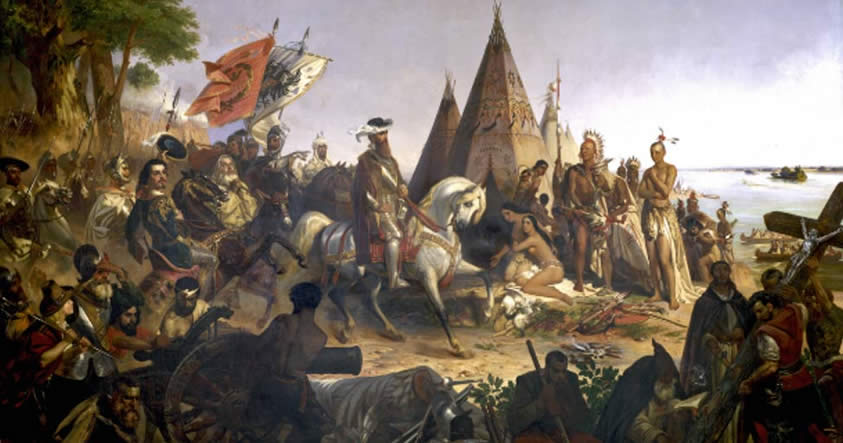

Capturing the cacique or indigenous ruler was a standard operating procedure for Spaniards in their expansion in the Caribbean, so capturing Motecuhzoma had considerable precedent but modern scholars are skeptical that Cortés and his countrymen took Motecuhzoma captive at this time. When news reached Cortés of the death of several of his men during the Aztec attack on the Totonacs in Veracruz, Cortés claims that he took Motecuhzoma captive. After eight months of battles and negotiations, which overcame the diplomatic resistance of the Aztec Emperor Moctezuma II to his visit, Cortés arrived in Tenochtitlan on 8 November 1519, where he took up residence with fellow Spaniards and their indigenous allies. Particularly important to the Spanish success was a multilingual (Nahuatl, a Maya dialect, and Spanish) Nahua-speaking woman enslaved by the Mayas, known to the Spanish conquistadors as Doña Marina, and later as La Malinche. Other city-states also joined, including Cempoala and Huejotzingo and polities bordering Lake Texcoco, the inland lake system of the Valley of Mexico.

The fall of Tenochtitlan marks the beginning of Spanish rule in central Mexico, and they established their capital of Mexico City on the ruins of Tenochtitlan.Ĭortés made alliances with tributary city-states ( altepetl) of the Aztec Empire as well as their political rivals, particularly the Tlaxcaltecs and Tetzcocans, a former partner in the Aztec Triple Alliance. The Spanish campaign against the Aztec Empire had its final victory on 13 August 1521, when a coalition army of Spanish forces and native Tlaxcalan warriors led by Cortés and Xicotencatl the Younger captured the emperor Cuauhtémoc and Tenochtitlan, the capital of the Aztec Empire. The next year, Cortés and his retinue set sail for Mexico. Individuals and groups laud their own accomplishments, while often denigrating or ignoring those of their opponents or their allies or both.įollowing an earlier expedition to Yucatán led by Juan de Grijalva in 1518, Spanish conquistador Hernán Cortés led an expedition ( entrada) to Mexico. Others, however, are unique to a particular primary source or group narrating the event. Historical sources for the conquest of Mesoamerica recount some of the same events in both Spanish and indigenous sources. Significant events in the conquest of Mesoamerica For the Spanish, Mexico was part of a project of Spanish colonization of the New World after 25 years of permanent Spanish settlement and further exploration in the Caribbean. They combined forces to defeat the Mexica of Tenochtitlan over a two-year period. It was not solely a small contingent of Spaniards defeating the Aztec Empire but a coalition of Spanish invaders with tributaries to the Aztecs, and most especially the Aztecs' indigenous enemies and rivals. There are multiple 16th-century narratives of the events by Spanish conquistadors, their indigenous allies, and the defeated Aztecs. The Spanish conquest of the Aztec Empire, also known as the Conquest of Mexico, the Spanish-Aztec War (1519–1521), or the Conquest of Tenochtitlan was one of the primary events in the Spanish colonization of the Americas.

Banda Oriental and Rio Grande do Sul (1762–63).Iberian Peninsula and South America (1762–63).Various petty city-states and tribes ( map).Aztec Empire and other indigenous states, (modern-day Mexico)Īnnexation of the Aztec Empire, the Purépecha Empire, and others by Spanish Empire


 0 kommentar(er)
0 kommentar(er)
